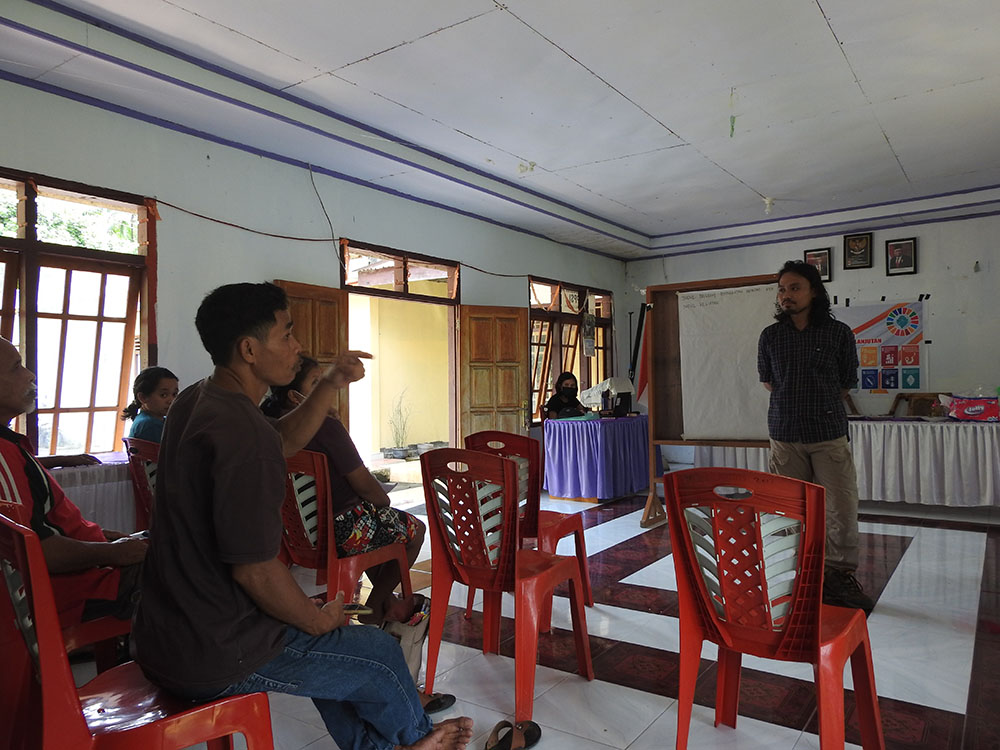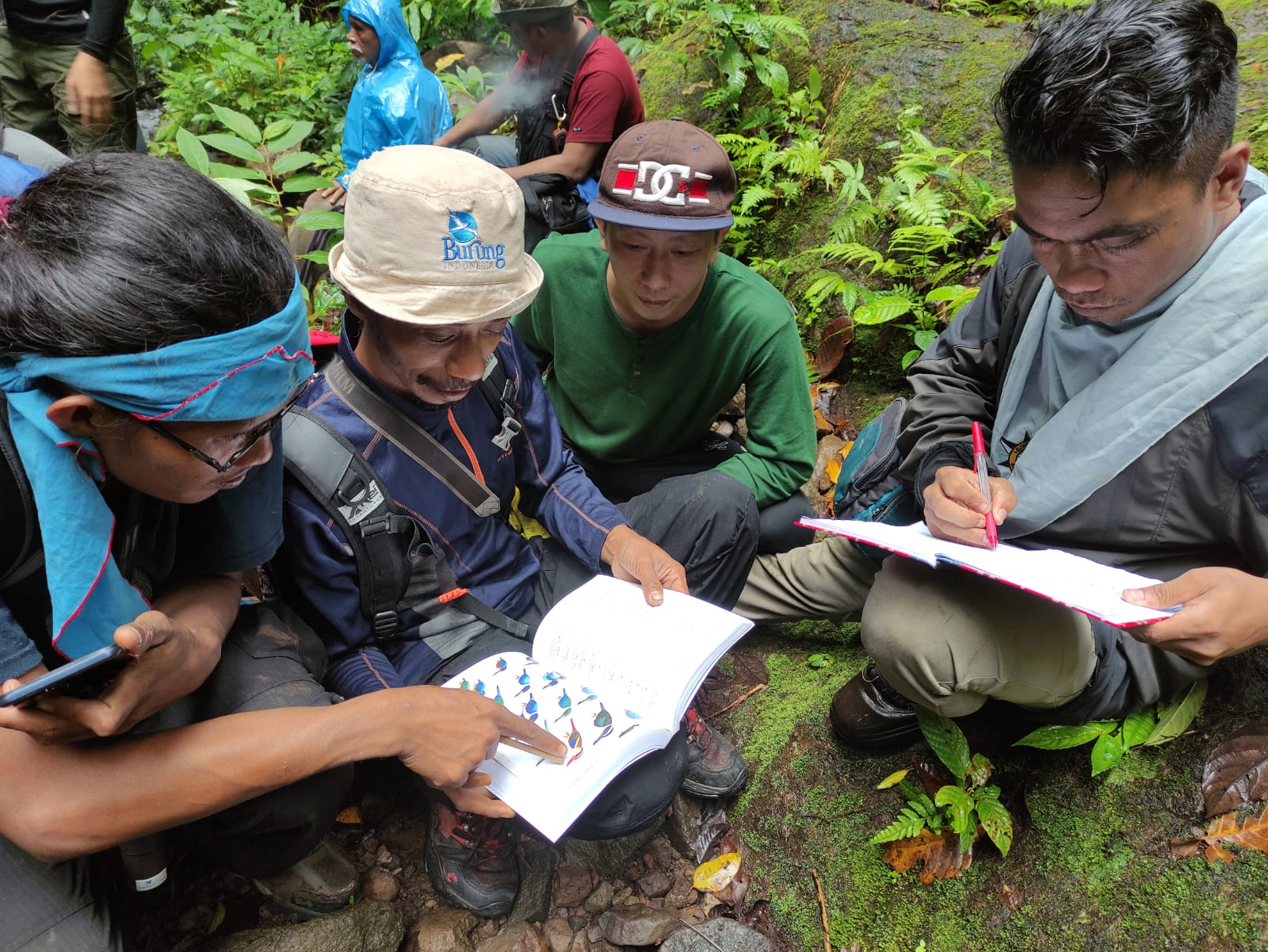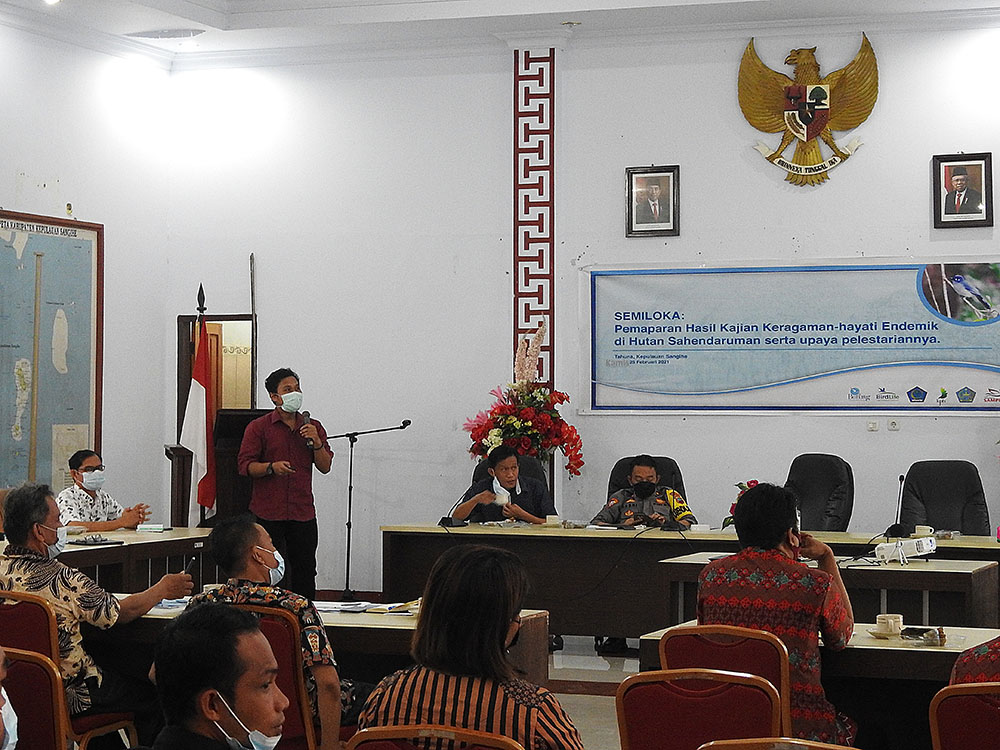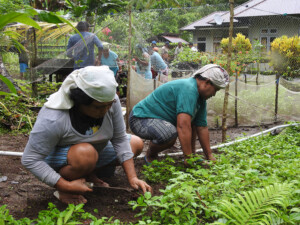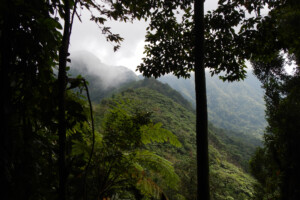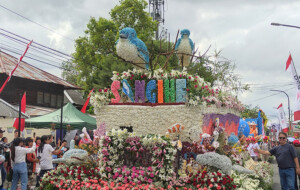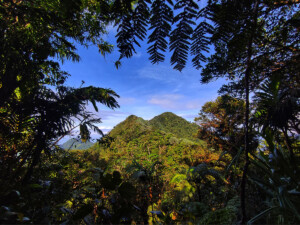Sangihe
Description
Sangihe Islands Regency is located in North Sulawesi Province with an area of 73,700 hectares. Being an archipelago, it provides speciation sites and bridges migrating birds from the northern to southern hemispheres. Together with Talaud, Sangihe was designated as an Endemic Bird Area (EBA), one of the 33 Important Bird and Biodiversity Areas (IBA) in Sulawesi, and a Key Biodiversity Area (KBA). Sangihe’s marine area is rich in coral reefs, ornamental fish and fish for consumption such as tuna and tuna-like species.
The last stronghold for endemic and endangered species, Mount Sahendaruman, is the only area in the island with natural forests. While primary forests in this mountain consist of aged trees, the secondary forests are formed by successive vegetation as a result of shifting cultivation. There is a potential for forest area reduction due to population growth and increased land demands.
Periodic population estimates, biodiversity surveys and analysis of habitat conditions recorded ten bird species, eight bird subspecies, three mammals, two reptiles and one insect inhabiting the area, all of which are endemic.
Not only is Sahendaruman a habitat for various endemic animals, it is also a water catchment area for the 70 rivers that flow in Sangihe, supports agricultural productivity and plays an important role in controlling natural disaster risk. In this area there is also agriculture, plantations, and settlements. Its territory includes the sub-districts of Manganitu, Tamako, South Manganitu, South Tabukan and Central Tabukan, and at least is included in the government area of 24 villages.
The majority of the Sangihe population make a living as farmers and fishermen. According to statistical data, the Sangihe Islands are among the top three largest fishing economies in North Sulawesi Province. In addition to the abundance of biota, Sangihe has the potential for natural tourism and mineral deposits.



